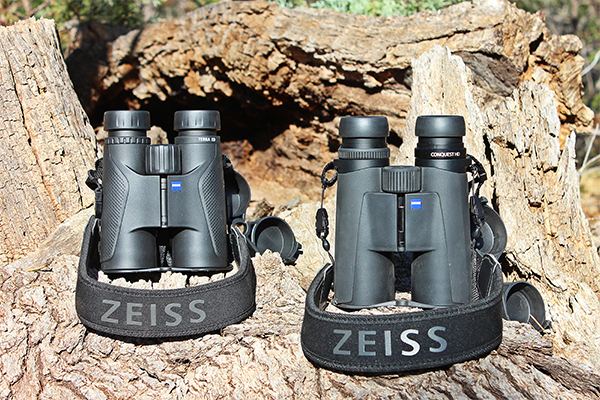
Last Updated on
By Tony Martins
In almost any side-by-side comparison there will be some subjectiveness and personal preference, and this is particularly true with binoculars that are evaluated through human eyes. What one reviewer deems best, another may judge as second best. And, while some performance characteristics like field-of-view can actually be measured, others like clarity and comfort cannot. Thus, this review of the Zeiss Conquest HD 10×42 and Zeiss Terra ED 10×42 binoculars will compare features and performance in terms of value, with lesser emphasis on which is the better optic.
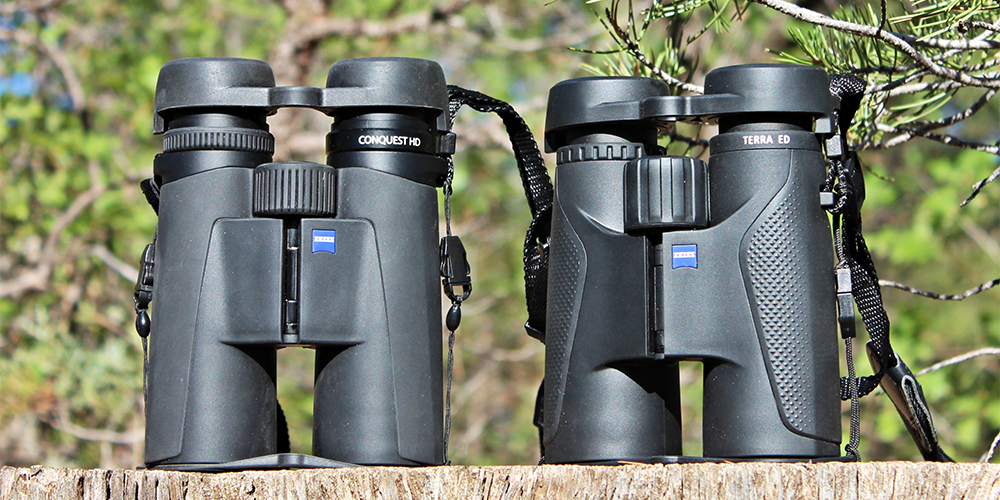
To begin, it may be useful to recall conclusions from my reviews of these two binoculars, after field testing them individually. The Terra ED “…is a solid optic that comes as advertised – simple and rugged – with performance that compares favorably with others in its class of entry level optics.” The Conquest HD’s real value “can be found in its optical performance. This is truly a premium binocular for half the price of top-line models…” It was my distinct pleasure to thoroughly test these two fine binocular offerings from Zeiss – one of the top names in sporting optics.
Physical Characteristics
The Conquest HD and Terra ED are both close in terms of size and weight. Conquest is about 3/10ths of an inch longer and 2-1/2 ounces heavier than Terra, due primarily to its fiberglass-reinforced polyamide chassis that’s a little lighter (and less costly) than Conquest’s aluminum chassis. 2-1/2 ounces doesn’t sound like much, but Conquest feels much heavier than Terra, and it’s built like a tank.
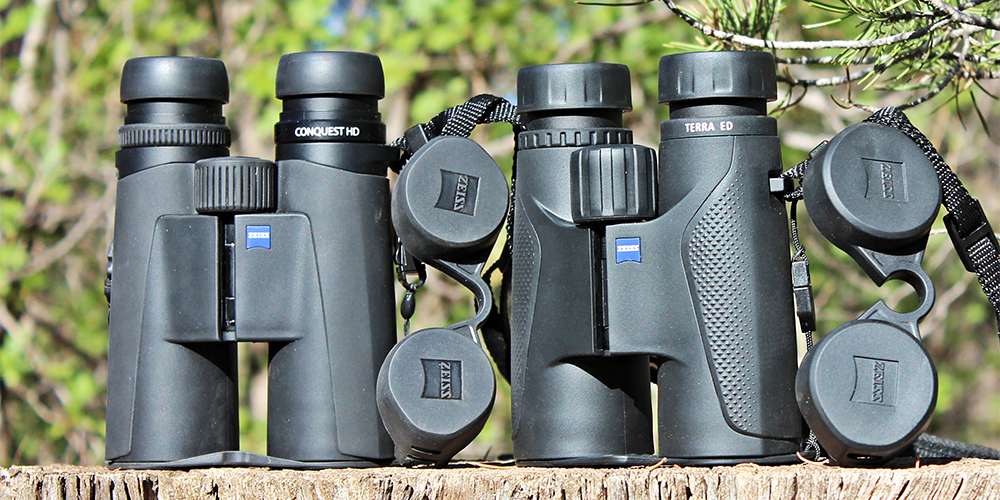
Size/Weight Advantage: Terra ED
Durability Advantage: Conquest HD
Conquest and Terra both score high on ergonomics. Both are well balanced, fit the hands equally well and have large focus wheels positioned for easy, efficient use with bare or gloved fingers. Conquest’s sleek rubber armoring is beautiful and feels great, but it attracts dust and dirt and is almost impossible to keep clean during field use. Terra resists dust and dirt better, with texture in the rubber armoring that facilitates a solid grip.
Overall Ergonomics Advantage: Terra ED
Comfort during extended use is important. Conquest has greater eye relief (18mm) than Terra (15mm), but an even bigger difference is found in the adjustable eyecups. Conquest is fitted with some of the softest and most comfortable I have ever used. Both binoculars feature diopter adjustment with Conquest’s 33% greater than Terra’s. It’s also worth noting that neither binocular has a built-in fitting for tripod adapter attachment, although aftermarket strap-type adapters can be used with both. This is a money saver, and we can assume that Zeiss designers believed a different optic would be chosen for extended use with a tripod.
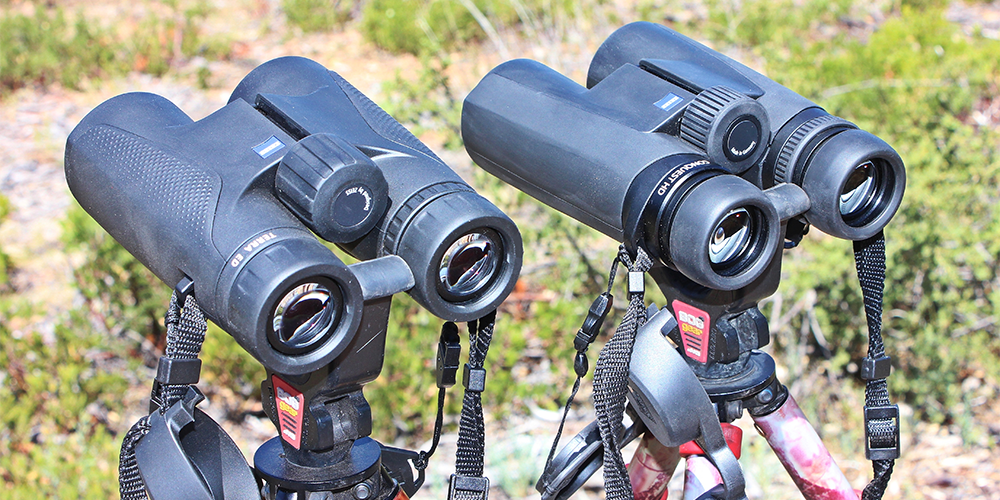
Comfort Advantage: Conquest HD
All considered, I would rate the physical characteristics in this comparison as a draw.
Performance Features
It would be easy and save some verbiage to simply declare the optical performance of the Conquest HD superior to the Terra ED in every way, as might be expected. After all, there’s a 2-fold price differential between the two optics. But that would be unfair to the Terra ED, with its remarkable performance considering the binocular costs less than $500.00. It would also be untrue – so let’s take a closer look.
The Conquest HD’s boast German engineering and German manufacturing. Although Terra ED’s are assembled in China, objective lenses are made in Germany by Schott, which many consider to be a “sister” company to Carl Zeiss. The Schott Extra-low Dispersion (ED) glass, which is also used in Conquest HD models, provides excellent resolution of details, and facilitates color distinction as well as sharpness, achieved through hydrophobic multi-coatings. In side-by-side comparison, there was no perceived difference in color distinction between Conquest and Terra. Although no color “fringing” from chromatic aberration (the inability of a lens to bring all the wavelengths of color together) was apparent with Conquest, there was some observed with Terra – primarily in early morning and late afternoon under sharply angled, bright lighting conditions.
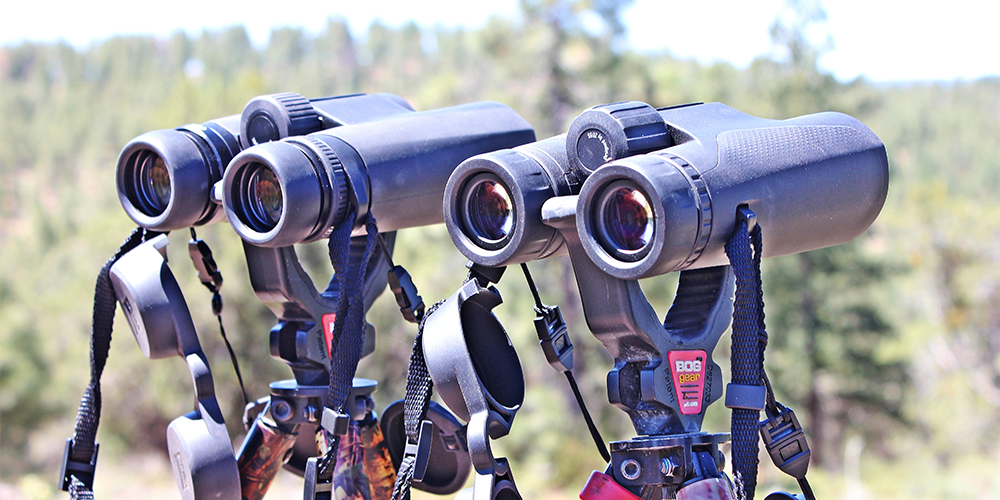
There was also some difference in sharpness in the middle of the field of view, but this took careful comparative observation to discern before our nod went to the Conquest HD’s. A significant performance difference between the two optics was seen in edge-to-edge clarity, where Conquest was clearly superior to Terra. There is a bit of fuzziness and occasional darkening around the field-of-view periphery with Terra, but none with Conquest. Since both Conquest and Terra use Schott ED glass, we can conclude that these differences result from glass quality and differential application of coatings.
The 10x42mm Terra ED’s boast a wide 329-foot field-of-view (FOV) at 1000 yards – which is quite good for 10-power magnification. The 345-foot FOV for Conquest HD 10×42’s is greater however, reported to be “the largest field-of-view in its class.” Conquest and Terra models both use Schmidt-Pechan roof prisms with reflective dielectric coatings (reportedly as many as 70). The Schmidt-Pechan is a proven design that is used by a number of other companies in production of lightweight, compact roof prism binoculars. Though popular, roof prisms can create distorted imagery. Proprietary Zeiss coatings are applied for “phase correction,” to prevent light loss in the elaborate prism systems, and improve low light performance. This area revealed the greatest differences between Conquest and Terra, with no question that the Conquest HD’s performed better in low light conditions at dawn and dusk. Although contrast was close, Conquest’s brightness was clearly superior to Terra’s. Once again, differences in coating treatment – in this case on prism surfaces – are undoubtedly responsible.
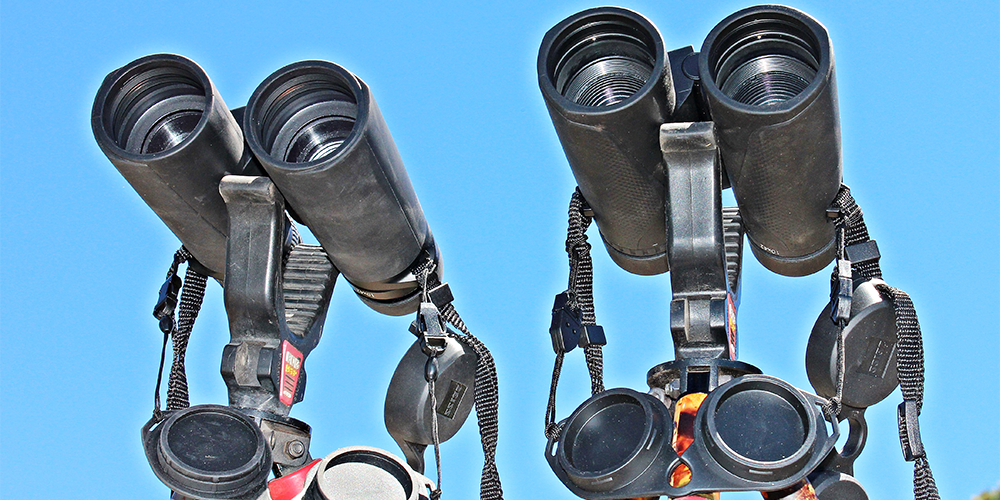
A performance feature shared by both Conquest and Terra is fast focus. The gear ratio requires just one full revolution of the focusing wheel to adjust from close focus to infinity. Those unfamiliar with this feature will find that it takes a little practice to master, while experienced users love it. Despite a narrower focus wheel, I prefer the smoother operation of the Conquest fast focus to the Terra, even when wearing gloves. It should be noted however, that the Terra ED will focus closer (about 5 feet) than Conquest HD (about 6-1/2 feet) in 10x42mm. This may be important to bird watching enthusiasts.
One Conquest HD performance feature not available with Terra ED models is a special coating called LotuTec. This is applied to ocular and objective lenses to repel water, and it works quite well. Water rolls off glass surfaces for clearer viewing during periods of inclement weather, and this coating also resists fingerprints and sheds dust and dirt. Hunters will appreciate this excellent feature.
Summary: Conquest HD holds performance advantages over Terra ED in brightness, sharpness, edge-to-edge clarity, field-of-view size, low light resolution, color fringing and water repellency. The two optics are comparable in color distinction and fast focusing. Terra ED has close focusing ability that is superior to Conquest HD.
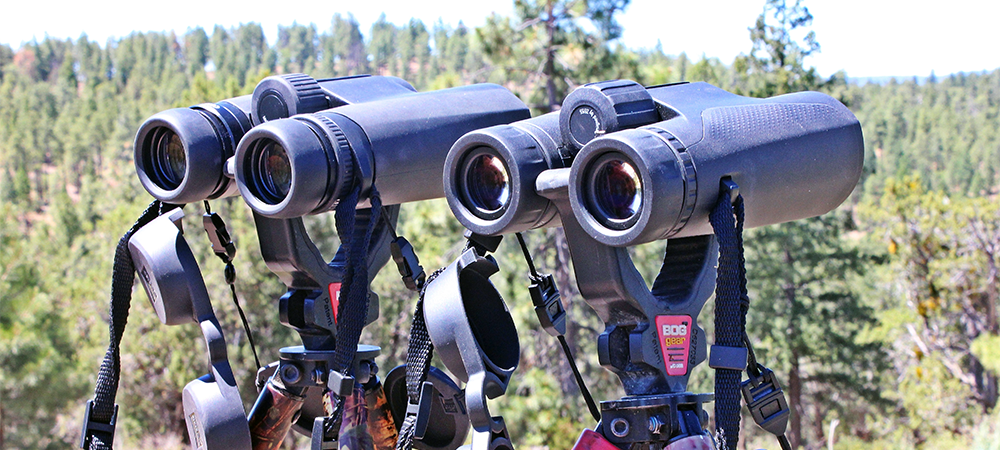
Accessories, etc.
Accessory items that come with both binoculars include rubber covers for ocular and objective lenses, neoprene neck strap, a protective carrying case, micro-fiber lens cleaning cloth and instruction booklet. The case provided with Conquest is a boxy traditional design with shoulder strap, slightly oversized to accommodate the optic with neck strap attached. A zippered mesh compartment is included in the top cover flap, which secures with a quick-connect plastic buckle. The case provided with Terra is a clamshell design with zipper closure and loop strap for belt attachment. Webbing attached to each side of the case prevents opening beyond about 45-degrees. With neck strap attached, the optic barely fits inside the case, requiring an excessive amount of time and effort for proper fitment and closure. While others may like this design – particularly if they use the optic without its neck strap – I don’t! I always use a neck strap (or shoulder harness) with binoculars in the field. Thus in my opinion, Terra’s case is fine for storage, but has little practical usefulness in the field.
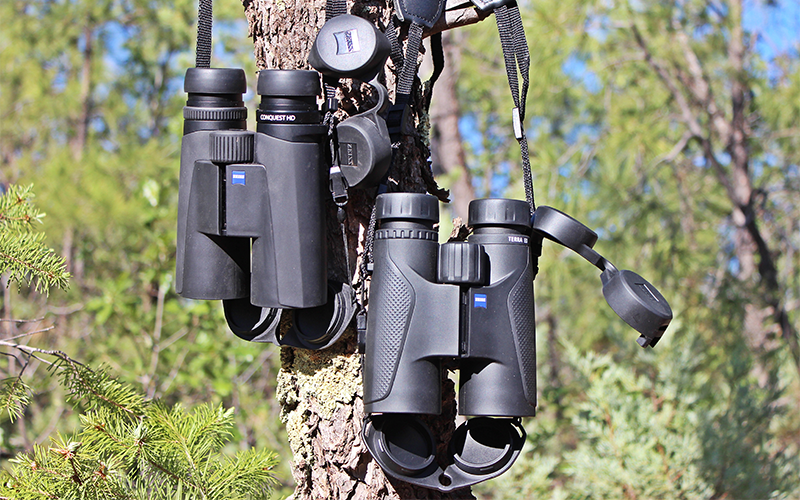
Carrying Case Advantage: Conquest HD
Neoprene neck straps provided with both optics are nearly identical. Although they are well designed, wide (1-3/4 inches) and support the optics well, they will cause sweating within just a few minutes of resting against the bare neck during warm weather use.
Ocular lens covers – often called “rain guards” – provided with both optics suffer from functionality issues. Conquest’s fits so tightly on both eyecups that it is quite difficult to remove, particularly when attached on both sides to the neck strap. Terra’s also fits snugly. Sliding either cover up and down the neck strap is exceptionally difficult, so practical usage is somewhat defeated by these designs. I found that detaching the cover from the strap on one side only lessened this problem while retaining functionality of the covers. A larger slot on each side of these 1-piece covers would facilitate sliding up and down the strap. Terra’s cover is easier to remove and replace than the somewhat tacky soft rubber Conquest cover.
Ocular Lens Cover Slight Advantage: Terra ED
The objective lens covers for both binoculars appear at first glance to be identical – same shape and both fit inside recesses in chassis barrels over the lenses – but they are not the same. Small rubber bars, designed to hold covers in place, are oriented differently on the two covers. Conquest’s is significantly more difficult to fit than Terra’s. And while Terra’s remains securely in place, Conquest’s cover loosens with normal movement while the optic is carried, exposing lenses to dust and dirt. Were it not for two short cords that connect the cover to the optic, it would eventually fall off. While Conquest’s cover – with cords attached – does protect objective glass from impact and potential damage, the poor fit is unacceptable for an optic costing $1000.00.
Objective Lens Covers Advantage: Terra ED
Finally, Terra ED and Conquest HD are both covered by the Zeiss Limited Lifetime Warranty (transferable) as well as a 5-year No-Fault Policy (US and Canada only, not transferable). All considered, I would rate accessories and warranty coverage as even.
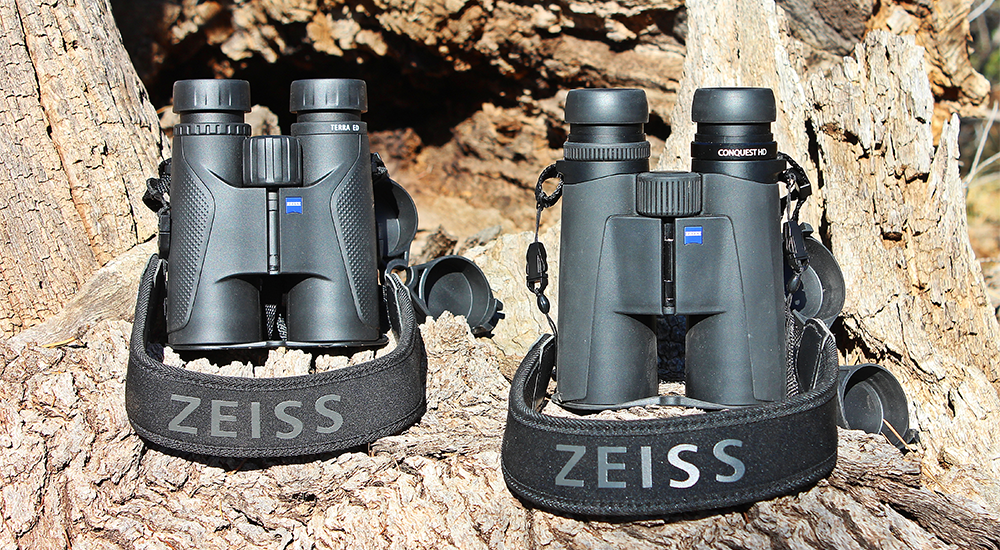
Comparison Summary & Conclusion
Features/Functions/Accessories |
Terra ED |
Conquest HD |
Better Value |
|
Physical Size |
X |
||
|
Weight |
X |
||
| Durability |
X |
Conquest HD |
|
| Ergonomics |
X |
||
|
Comfort |
X |
||
|
Color Distinction |
― |
― |
Terra ED |
|
Chromatic Abberation |
X |
||
|
Sharpness |
― |
― |
|
|
Edge-to-Edge Clarity |
X |
Conquest HD |
|
|
Field-of-View Size |
X |
Terra ED |
|
|
Low Light Resolution |
X |
Conquest HD |
|
|
Contrast |
― |
― |
|
|
Brightness |
X |
||
|
Fast Focus |
― |
― |
|
|
Close Focus Distance |
X |
Terra ED |
|
|
Water Repellency |
X |
Conquest HD |
|
|
Protective Carrying Case |
X |
||
|
Neck Strap |
― |
― |
|
|
Ocular Lens Cover |
X |
||
|
Objective Lens Cover |
X |
||
|
Warranty |
― |
― |
|
|
Price |
$449.99 |
$999.99 |
Conquest HD |
In the Table above, “X” means a decided advantage for one optic over the other, and “―” means no practical advantage for either. Some performance differences were discernable only when the two optics were positioned for side-by-side comparison.
So, which is the better value? For occasional binocular users, I would pick Terra ED, especially for family use or for couples going on a sightseeing adventure or taking their first safari, for example. Consider that you can buy two Zeiss Terra ED binoculars for the price of one Zeiss Conquest HD, with enough leftover for a couple of backpacks, or an evening of fine dining. I would also pick Terra as a high-quality backup for hunters and outdoors enthusiasts who also own a top-of-the-line binocular as their primary optic. Terra’s compactness and comparative light weight make it well suited for rigorous activities like rugged trail hiking, mountain hunting and horseback riding adventures.
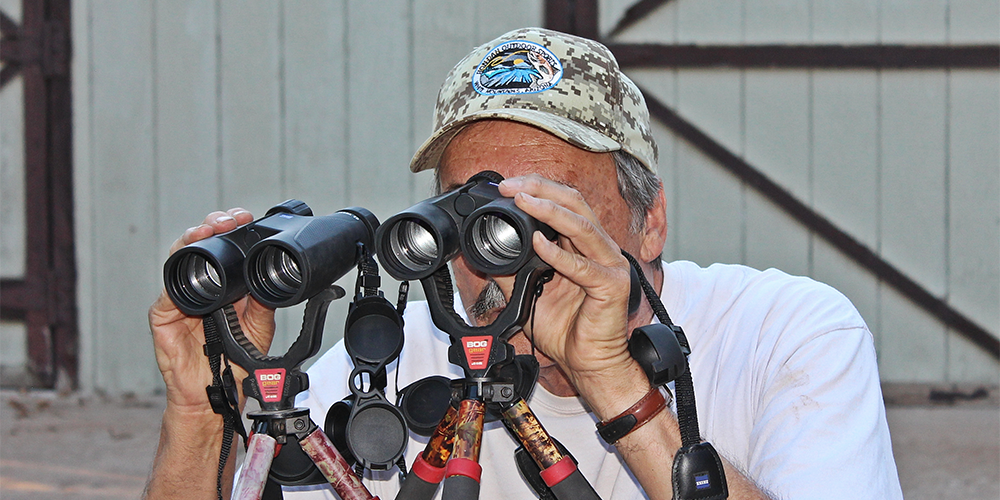
Some may find it surprising that I have listed the higher price of the Conquest HD’s as the better value. The logic here is simple – this is a premium quality binocular for about half to one-third the price of premium top-line offerings. For hunters on a budget, who need excellent optical performance in low-light and inclement weather conditions, Conquest is the clear choice over Terra, and a great value at under $1000.00. If I were limited to just one binocular for all outdoors activities, forever… the Zeiss Conquest HD in 10x42mm would receive serious consideration.




Comments (1)
goblin072 .says:
November 20, 2018 at 12:26 amI dunno I have both and I would not say the Conquest is a clear winner. Its not 500.00 better than the Terra ED, most people can’t tell them apart. Low light performance is overstated as well. Both Binoculars outperform a rifle scope because of ocular summation of two eyes vs one lens rifle scope. So if you can’t see it in the rifle scope there is not much use if you can see it better with binoculars.